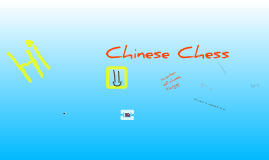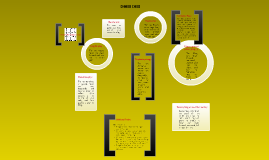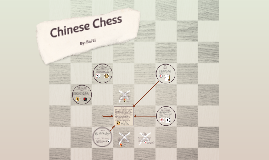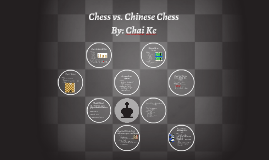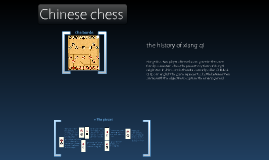chinese chess
Transcript: The guards is also confined to the fortress. He moves one point diagonally. 5. The Chariot moves exactly like the rook in western chess: as many spaces as it wishes horizontally or vertically, until it meets another piece or the edge of the board. 7. The Foot Soldier moves one point forward. After it crosses the river, it may also move to the right and left, but never backward. Unlike the pawn in western chess, this piece captures just as it moves normally (see diagram). It does not promote upon reaching the far end of the board. 2. 1. The set up 6. The Cannon/Catapult is a peculiar piece. It moves exactly like the Chariot (or rook) when not capturing. But to capture, it must have a piece, friend or foe, in line to jump over. In this diagram, the Cannon/Catapult can capture the enemy pawn, as shown. It can not, however, move beyond that pawn, or to the unoccupied points A or B. The General moves one space at a time left, right, forward or backward. He is confined to the nine point fortress, on his side of the board. 4. Watch!! The Horse moves first one point along the horizontal/vertical lines, and then one point diagonally. Similar to the knight in western chess, but this horse can be blocked by an intervening piece. The horse in the diagram can not move to the points marked by the red X’s; it is blocked by the Black pawn. The object of this game is to force capture of the enemy Governor/General (King). This may be by checkmate (he is under attack and has no means of escape) or by stalemate (he is not under immediate threat, but there is no legal, safe move). Except for the Cannon/Catapult (see above), a piece captures by using its normal move, and landing on a point occupied by an enemy piece. The captured piece is removed from the board and the capturing piece takes its place. The Cannon/Catapult also takes the place of its captured piece, but must use one intervening piece, as shown in the discussion of its unique move. When the Governor/General (King) is being threatened with capture, he is said to be in “check,” and the player must move in such a way that the Governor/General is no longer threatened. If he can not, he has lost the game. It is not allowed to give perpetual check, or a perpetual attack. If the game is repeating its position, the player forcing the repetition must do something else. There is a special rule about the Governors/Generals. The two may never face each other on the same line across the board, with no intervening pieces between them. It is said that they may not “see” each other. This becomes important, especially in the end game, as the position of one Governor/General limits the movements of the other, and can “protect” a piece invading the enemy fortress. The River, which creates a space between the two sides of the board, is generally ignored — as if it were filled in with lines, completing a board of 9 x 10 points. It only effects the moves of the Elephants, who can not cross it, and the Foot Soldiers, who gain more power of move after crossing it. In tournament play, to begin the game, Red moves first. RULES!!!! 3. The Minister/Elephant moves exactly two points in any diagonal direction. This piece can be blocked by another piece on the intervening square (A and B in diagram) and is not allowed to cross the river, which runs between the two sides of the board.







